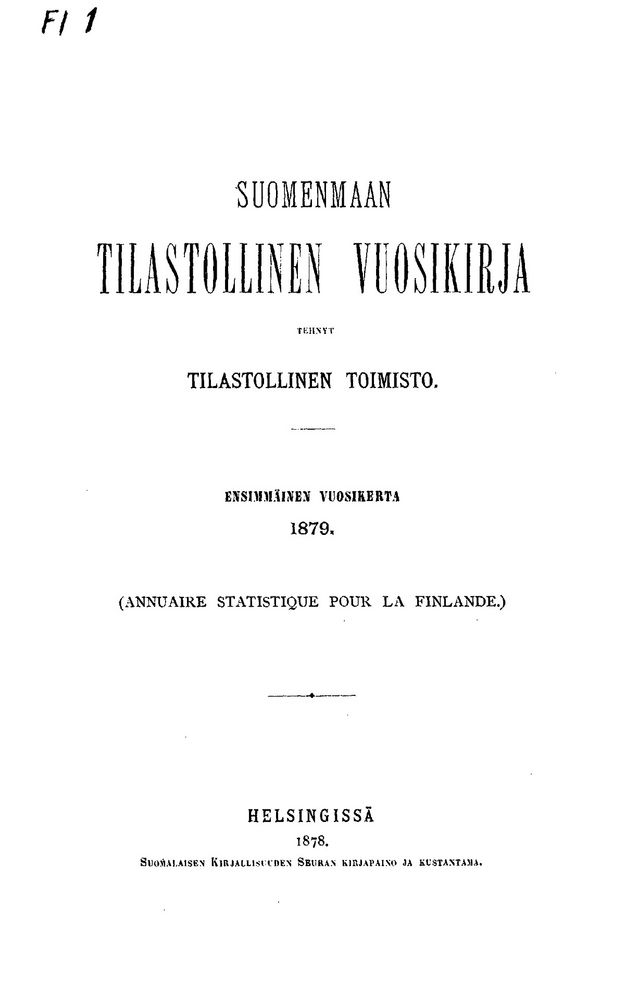Karl Ferdinand Ignatius
Karl Emil Ferdinand Ignatius
Born October 27, 1837, Pori. Died September 11, 1909, Helsinki.
Master of Arts (history), 1860, Licentiate of Philosophy, 1862, Doctor of Philosophy, 1864, Imperial Alexander
Assistant to the Head Statistician, 1865–68, Head Statistician, 1868–75, Director 1875–1885, Central Office of Statistics (–1870 temporary bureau of statistics, –1884 Statistical Office)
Docent, Nordic History and Docent of Finnish Statistics, 1865, Imperial Alexander University
Senator, Head of the Cabinet Committee, 1885–1900, 1905–8
Representative of the Burghers at the Diet, 1877–8, 1882, 1885, 1904–5
Member, Helsinki City Council, 1875–8, 1903–5
Founder Member, Finnish Geographical Society, 1888, Chairman, 1888–9, Honorary Member, 1907
Member, Finnish Society of Science and Letters, 1879
Chairman, Finnish Antiquarian Society, 1877–85
Founder Member, Finnish Historical Society, 1875, Chairman, 1877–8, 1884–5, 1900–1
Honours
Italian Cavaliere, 1884
Knight of the Order of St.Vladimir, Fourth Class, 1883, Third Class, 1887
Knight of the Order of St. Anna, Second Class, 1880, First Class, 1897
Knight of the Order of St. Stanislas, Second Class, 1876, First Class, 1892
Photo: National Board of Antiquities / Daniel Nyblin
Written by Tomas Sjöblom
Translated by John Calton

